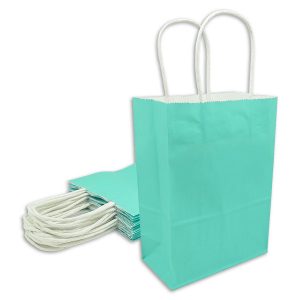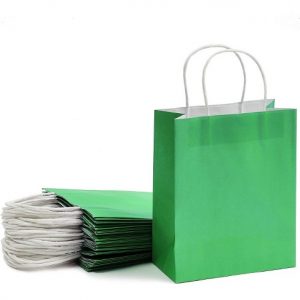At present, the corrugated box industry uses water-based ink printing equipment in four ways, and their characteristics are different. One is the chain-type single-machine printing method, which can only print without slotting and die cutting. The second is the commonly used printing and grooving and circular die-cutting production methods. This method uses inking printing. After grooving or die-cutting, it can be formed by only bonding (nail box). The third is the use of automatic printing grooves, folding and bonding (nail box) production methods, this machine adopts a bottom ink printing system for folding molding, which is a disposable molding machine. The fourth is the current more advanced printing and circular die-cutting methods. It is characterized by multi-color printing and high equipment accuracy. The printed products can achieve color printing effects, especially suitable for the sales of color cartons. Package. The common feature of the above several methods is the use of ink printing, the printing principle and equipment structure are basically the same, but the number of printing colors, the number of mesh lines and the process equipment are different. The printing process is affected and restricted by many aspects and factors, and many problems cannot be solved by simple adjustments by operators. Only through the cooperation of all aspects, we can minimize and avoid unnecessary problems in production.
The size of the slotting knife and the longitudinal pressure line is not accurate, resulting in inaccurate printing position
Cause Analysis:
Because the slotting and pressing line are not adjusted according to the size required by the process drawings, the length or width of the cardboard manufacturing size will deviate, and the printing position will eventually be affected.
solution:
First, adjust the slotting or crimping size according to the manufacturing size of the drawing, and require the position to be accurate, and then readjust the position of the printing plate according to the accurate size and position, and check the deviation of the slotting or crimping wheel due to wear.
The layout of the printing plate is not accurate, causing the printing plate to be readjusted
Cause Analysis:
Due to the unclear marking of color register and local printing plate position, the error in typesetting is relatively large, and the printing position is obviously deviated in actual production. The current printing equipment is basically roller-type printing, and the typesetting is on a plane, which will inevitably produce longitudinal position errors, and also cause shrinkage problems due to the size of the printing pressure.
solution:
First, when making a 1:1 ink drawing, it should be drawn at a normal percentage shrinkage. When typesetting, adjust the printing plate strictly according to the position of the ink map. When the color registration accuracy is very high, the “cross line” typesetting method should be used, and the cross line of the printing plate and the ink map should be aligned. If necessary, a magnifying glass can be used to check the deviation.
Printing ghosting and leakage problems
Original group analysis:
These two problems often appear in the production process. The ghosting around the printed pattern or text is caused by the excessive pressure between the anilox roller and the printing plate; the ghosting at the front edge of the printing is caused by the excessive pressure between the printing cylinder and the impression roller. Large-area printing through the bottom and white leakage are caused by insufficient pressure of the printing roller and the impression roller. These two problems are caused by opposite pressures.
solution:
The problem of printing ghost should adjust the gap and pressure between the anilox, roller and plate roller, commonly known as the upper pressure. The ghost image is caused by the excessive pressure on the printing plate (referred to as the flexographic plate) by the anilox rollers. Therefore, the gap between the two rollers should be increased and the pressure should be reduced accordingly. For the problem of printing leakage, the gap and pressure between the plate roller and the impression roller should be adjusted, commonly known as down force. Because the gap between the plate roller and the impression roller is too large, it will be unrealistic when printing on a large area, which needs to increase the down force. In addition, the quality of printing plate unevenness, plate lining, printing plate hardness, etc. will affect the occurrence of the above problems, and local adjustments should be made.
Multi-color printing is inaccurate
Cause Analysis:
The problem of inaccurate overprinting is common in the printing industry. Because it is composed of many factors, it is not easy to solve it. First of all, the position and accuracy of the plate roller of the multi-color printing slotting machine are direct factors. The second is the adjustment of the paper feed roller and the traction roller, the use of the traction belt, and the arrangement of the printing plates; the accuracy of the board and the warpage of the cardboard will cause inaccurate registration problems.
solution:
Since overprinting is composed of multi-color printing, it is inevitable that the position of the plate rollers on the slotting machine for each color printing is relatively different; this requires the equipment department to adjust the printing position to ensure that the error is at the minimum limit. First of all, since the beginning of printing has an effect on the thickness of the cardboard, the plate roller of each color should have a slightly larger pressure than the previous one, so that the pressure exerted on all colors can be equal. Secondly, there are paper feed rollers and traction rollers at the front and rear of each print. The adjustment of these two rollers is very important, especially when the width of the cardboard is too narrow, the gap and position should be adjusted. In case of partial color registration, two traction belts should be added to the edge of each printing plate to ensure the smooth transition of the cardboard during the printing process. Furthermore, due to the difference in the degree of warpage of the corrugated cardboard, it has an absolute impact on the overprinting. If necessary, the cardboard should be replaced again, but it must be flat. [next]
Printing color is inconsistent
Cause Analysis:
Inconsistent printing color refers to the uneven imprinting of the entire cardboard along the machine’s longitudinal or transverse direction after printing. The main reason for this problem is that the two ends of the transverse printing are different in color, one side is lighter and the other side is darker. In addition, the inking system has unfavorable circulation, insufficient ink flow, and uneven transfer of the ink transfer roller.
solution:
The uneven color in the horizontal direction is caused by the difference in the gap between the rubber roller and the anilox roller, the anilox roller and the plate roller. Therefore, to adjust the gap between the three rollers, the two ends must be kept parallel. Since the printing slotting machine is positioned at the center, the rubber roller and the anilox roller will wear faster if the narrower cardboard is produced in the normal period, and the two ends will wear less. The result after printing is different. If the color at both ends Obviously inconsistent, a roller needs to be repaired or replaced. The longitudinal color unevenness is caused by the ink flow being too small and insufficient ink supply. Therefore, it is necessary to slightly increase the ink volume and run the machine idling, so that the ink volume is fully circulated before production can reduce the occurrence of problems in this area.
Crush the corrugation when feeding paper or printing
Cause Analysis:
This is caused by two aspects. One is that the gap of the paper feed roller (referring to the printing slotting machine) is too small, which is lower than the thickness of the original cardboard, and the corrugation is crushed before printing; the other is that the printing roller pressure is too large during the printing process. , Resulting in obvious crushing of the corrugated printed parts.
solution:
The gap between the paper feed rollers should be determined according to the thickness of the corrugated cardboard, which is basically 0.5mm lower than the thickness of the original cardboard. If the gap is too small, the corrugation will be damaged, and the physical strength of the corrugated box will be affected after the corrugated box is formed; if the gap is too large, the cardboard cannot travel at a uniform speed, causing the printing position to be incorrect. Pay attention to adjusting the gap between the printing roller and the impression roller during printing. At present, most of the corrugated box printing uses flexographic plates, and the printing method adopts light pressure, even with kiss printing, the pressure must not be too high. If the pressure is too high, the corrugated parts of the printing part will be crushed, and the performance of the carton will also be affected. Therefore, the adjustment of the gap between the plate roller and the impression roller is very important, as long as there is no obvious depression in the hand-feel printing part.
The corrugated box manufacturing process must not destroy the corrugation. It is different from the general carton sales package, because the force formed by the corrugation is multifaceted. Once the UV-type corrugation is destroyed, this type of corrugation is meaningless.
In summary, these printing problems are just the most common problems. Others, such as blurred printing, distortion, excess printing marks after printing (commonly known as printing smudges), streaks in imprints, and ink colors that do not reach the desired effect, etc. There are many more to analyze. However, in addition to objective factors, such as printing plate materials, plate liners, inks, and even the quality of corrugated cardboard, they directly affect the printing effect of corrugated boxes. Therefore, high-quality raw materials must be selected to ensure high-quality printing. In order to solve various problems in the printing process, it is necessary to rely on operators with practical experience. First of all, they must have a certain level of theoretical knowledge, such as understanding the principles and procedures of printing equipment and manufacturing processes, and fully grasping the printing system. The relationship among the four major parts of the rubber roller, the ink transfer roller (anilox roller), the plate roller and the embossing roller can be solved quickly by adjusting the corresponding parts accurately when a certain problem occurs. Secondly, we must be good at summarizing in actual operation, adjusting which parts under what circumstances, and requiring accuracy, which is not easy for ordinary operators. As an excellent gear shifter, you must be good at finding problems and be able to solve them in time, so that production efficiency can be improved. All in all, printing problems cannot be separated from the various conditions mentioned above. As long as the printing principle is fully understood, the printing problems will be easily solved.









